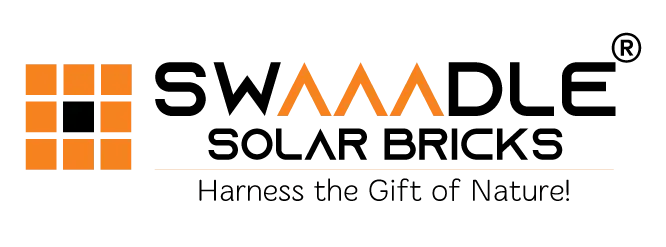The Magnificent Working Of Solar Power
by admin | Oct 20, 2022 | Solar Brick
A solar power plant is an arrangement of varied solar factors including a solar panel to absorb and convert sun into electricity, a solar inverter to convert the electricity from DC to AC while also covering the system, solar batteries and other solar accessories to set up a working system.
The main concern of a solar power factory is to give complete energy independence while also lowering your electricity costs. It consists of both small and huge capacity solar systems varying from 1KW to megawatts.
A solar power plant is also known as a solar energy system, solar system, solar power system and solar factory. There are many technologies used in solar power plants, but solar photovoltaic technology is the perfect option for collecting maximum sunshine and converting it to electricity.
THE WORKING OF A SOLAR POWER PLANT
Solar photovoltaic( PV) panels use cells containing a semi-conductor material to capture the sun’s energy and convert solar radiation into electricity. The most typically used semi-conductor material is silicon, which is an abundant natural resource found in beaches. When light strikes the cell a certain quantum of energy is absorbed within the semiconductor material, knocking electrons, the negatively charged bits that form the base of electricity, loose.
Typically PV cells have two layers of semi-conductor material, one positively charged and one negatively charged. When light shines on the semi-conductor the electric field across the junction between these two layers causes electricity to flow, generating direct current (DC). By placing metal connections on the top and bottom of the PV cell, we can draw that current off for external use.
Solar PV electric panels don’t need bright sunshine in order to operate, meaning that you can still induce electricity on cloudy days, still in general the lesser the intensity of light the advanced the inflow of electricity. Although, due to the reflection of the sun, days with slight shadows can affect advanced energy yields than days with a thoroughly bright sky.

-
-
-
Each individual panel is constructed of a level of silicon cells, a metal frame, a glass enclosed by a special film, and wiring. For maximum effect, the panels are grouped together into arrays ”(an ordered series) and placed on rooftops or in large open-air spaces. The solar cells absorb the sun during daylight hours.
-
Inside of each solar cell there lies a thin semiconductor wafer built from two layers of silicon. One level is positively charged, and the other negatively charged, forming an electric field. When light energy from the sun strikes a photovoltaic solar cell, it energizes the cell and causes electrons to ‘ come loose ’ from particles within the semiconductor wafer. Those loose electrons are set into movement by the electric field enclosing the wafer, and this movement creates an electrical current.
-
Now the solar panels are working efficiently to convert sun into electricity, but the electricity generated is called direct current (or DC) electricity, which isn’t the type of electricity that powers maximum homes, which is alternating current (or AC) electricity. Fortunately, DC electricity can effortlessly be changed into AC electricity by an appliance called an inverter. In contemporary solar systems, these inverters can be configured as one inverter for the entire system or as individual microinverters attached behind the panels.
-
Once the solar energy has been converted from DC to AC electricity, it runs through the electrical panel and is distributed within the home to power appliances. It works exactly the same way as the electrical power generated through the grid by an electric service company, so nothing within the home needs to change.
-
On cloudy days and overnight, the solar shingles or panels may not be capable of capturing enough sun to use for energy; again, in the middle of the day when nothing is home, they may collect extra energy — other than you need to operate your home. That’s why a cadence is used to measure the electricity flowing in both directions to and from homes.
-
-

